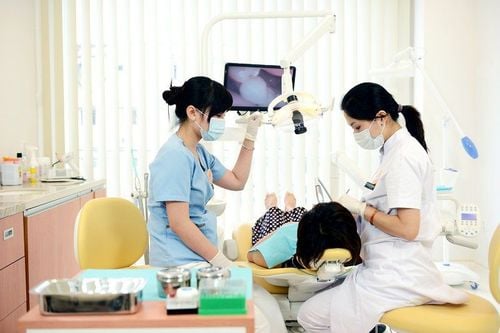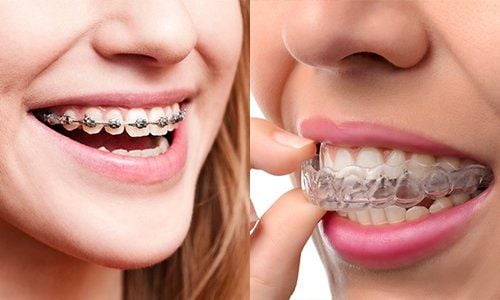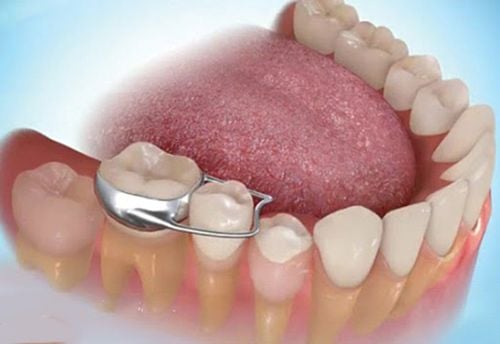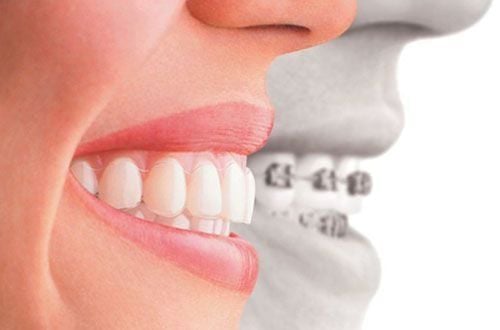This is an automatically translated article.
The article is professionally consulted by Master, Doctor Dang Tien Dat - Doctor of Odonto-Stomatology - Department of Medical Examination and Internal Medicine - Vinmec Ha Long International General Hospital.Orthodontic braces are now popular with many people because of their high aesthetic effect and still keep their real teeth. Before deciding to proceed with braces, we need to better understand the types of braces as well as the uses and effectiveness that braces bring.
1. The effect of braces
When braces, braces are used by dentists to correct misaligned teeth to the correct position on the jaw arch, bringing high aesthetic efficiency, helping to avoid oral diseases caused by teeth erupt in the wrong place. In addition to the beauty effect, braces also bring the following specific effects:
Straighten the crowns of teeth. Narrow the space between the teeth. Improve chewing and communication function. Improve oral health. Correction of malocclusion.
2. What are braces?
Braces are dental tools used by doctors to support during cosmetic orthodontics. There are many types of braces, each of which will perform different functions. Currently, there are two common types of braces that are fixed braces and removable braces, each method will have different specialized appliances.
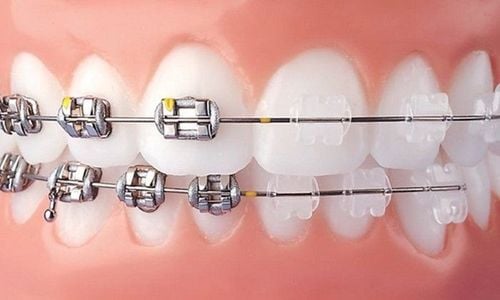
Phương pháp niềng răng cố định
3. Types of fixed braces
Fixed braces, also known as braces with brackets, this is the most popular orthodontic method today, The advantage of this method is that it brings high accuracy.
The activities of people with fixed braces are also less affected, people with braces can eat and drink normally. However, when fixed braces need to limit carbonated drinks, foods that are too hard or too sticky (gum).
Interstitial elastic The first braces with brackets to mention is the interstitial elastic. These are small circles, made of rubber material, whose main function is to create a gap between two teeth. Before wearing braces 1 week, people with braces must wear elastic bands to create space between 2 teeth, support for easier orthodontic treatment and brackets.
In particular, an important requirement during the time of wearing an elastic band is to limit eating and drinking too hard, because it can cause the elastic to fall out.
Orthodontic stitches After 1 to 2 weeks of wearing the elastic, the dentist will remove the elastic and bring in the orthodontic stitch. This metal suture will be fixed on the 6th or 7th molars with a specialized fixing material. The stitches will follow the orthodontist throughout the braces process.
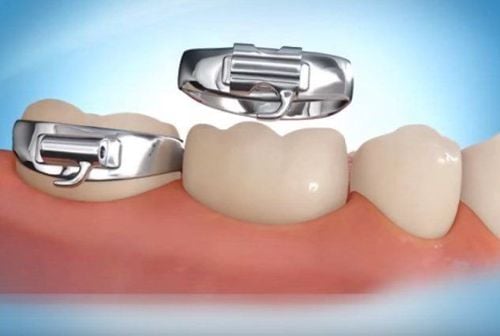
Khâu chỉnh nha được sử dụng sau niềng 1-2 tuần
Bowstring One of the indispensable fixed braces is the archwire system. The arch wire is the wire system connecting the brackets, the main function is to create force to pull the teeth to move in the direction of the brackets. There are many different types of bowstring, the main material is stainless iron such as: Nickel - Titanium.
Depending on the stage of braces, the archwire system used will vary in shape and size. The bowstring will be attached to the slots of the brackets and fixed with an elastic band or steel wire.
Braces system Orthodontic braces help correct misaligned and misaligned teeth and this effect is largely due to the bracket system. This type of braces has the function of fixing and holding the archwire system, when creating force, it will help the teeth move to a new position, straighter and more aesthetic.
Braces with brackets come with a wire system that is more effective, and the braces time is also shorter than removable braces. The reason is that the pulling force is adjusted on the arch wire, brackets are usually more stable and frequent than the method of braces without brackets.
Hook, minivis Another orthodontic appliance is the hook, which has the form of a hook, used to press on the bowstring, which has the effect of connecting 2 jaws together. Hooks are usually attached to canines or premolars and on bands or brackets of molars.
Minivis is an absolute anchor point that helps move the front teeth inward without allowing the inner teeth to run back out.
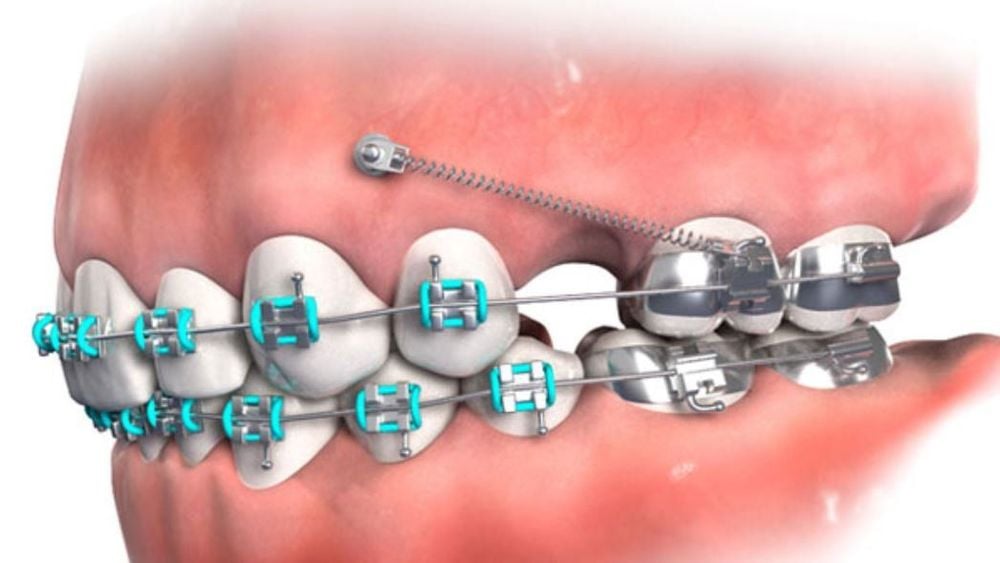
Niềng răng Minivis cho hiệu quả nhanh hơn
Retainer The retainer is an indispensable fixed braces appliance. After the brackets are removed, the braces process is completed, the retainers are still used to keep the teeth strong, stable and do not move back to the original position, replacing the function of the previous brackets. The retainer must fit snugly into each person's jaw for use after braces are removed.
Dental wax At the beginning of the process of braces with brackets, metal braces will rub against the gums and cheeks, causing bleeding or pain. At that time, people with braces need to use dental wax to apply to the surface of appliances or between teeth to minimize unwanted effects such as pain, bleeding...
3. Basic braces process with braces method
Step 1: Put the elastic in the gap
Step 2: Attach the orthodontic stitch.
Step 3: Attach the bracket system
Step 4: Create a space between the teeth to move the teeth (by dilating the jaw, grinding the teeth, extracting teeth...)
Step 5: Extracting wisdom teeth (if any).
Step 6: Set orthodontic minivis.
Step 7: Orthodontic treatment depends on each patient.
Step 8: After successful braces, remove the system of braces and wear post-orthodontic retainers.
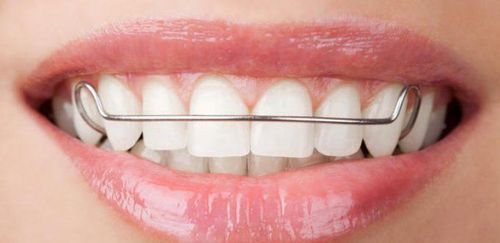
Sau tháo niềng, người niềng sẽ được mang hàm duy trì
Some notes when braces with brackets The brackets and archwire system when fixed braces are the ideal place for food particles, plaque and bacteria to grow. Therefore, people with braces need to clean their teeth properly, use oral care tools to limit the risk of tooth decay and gum disease.
4. Types of removable braces
Removable braces or braces without braces are gradually becoming more popular. There are 2 methods of removable braces: Invisalign (originated from the US) and eCligner (originated from Korea). Braces without braces will use a type of tray to help straighten teeth, the effect is usually not inferior to the classic bracket system.
The most important non-bracket braces device is the aligner tray. The design of this aligner tray is made of transparent, simple, elastic materials and exerts force on the teeth, moving the teeth slowly to a regular, vertical position on the jaw arch. These plastic aligners are proven to be benign, non-irritating in the oral cavity and do not affect the health of the user.
The first advantage of this method is the aesthetics in the process of braces, not letting people see the tangled bracket system. Besides, the aligners also limit the side effects such as slipping of the brackets, causing damage to the lips, cheeks and surrounding soft tissues.
Specializing in Dentistry - jaw - face, Vinmec hospital is equipped with KAVO dental chair system (Germany), camera in dental chair, panorama machine of Gendex, X-ray machine of in situ, Phosphorus film scanner of Gendex brand. , Dently ultrasound machine, Radii Plus Australia teeth whitening forging, endodontic machine, root canal length meter.... help provide maximum support in the examination and implementation of all dental and maxillofacial techniques.
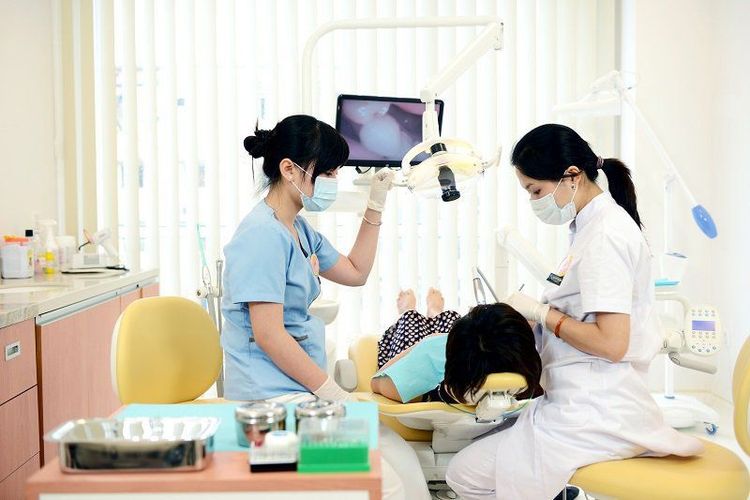
Lựa chọn cơ sở uy tín trong lĩnh vực nha khoa giúp bạn an tâm hơn khi niềng răng
In addition, Vinmec gathers a team of experts, leading doctors with high qualifications, experience, dedication and devotion to the health of patients.
Master, Doctor Dang Tien Dat graduated with a master's degree in Odonto-Stomatology from Hanoi Medical University. Dr. Dat has strengths in: performing wisdom tooth extraction, root canal treatment, tartar removal, gentle tooth filling, minimal trauma, helping patients to minimize pain; Design and make beautiful porcelain teeth. Currently, dentist Dat is working at the Department of Odonto-Stomatology, Vinmec Ha Long International Hospital.
To register for examination and treatment at Vinmec International General Hospital, you can contact the nationwide Vinmec Health System Hotline, or register online HERE.






